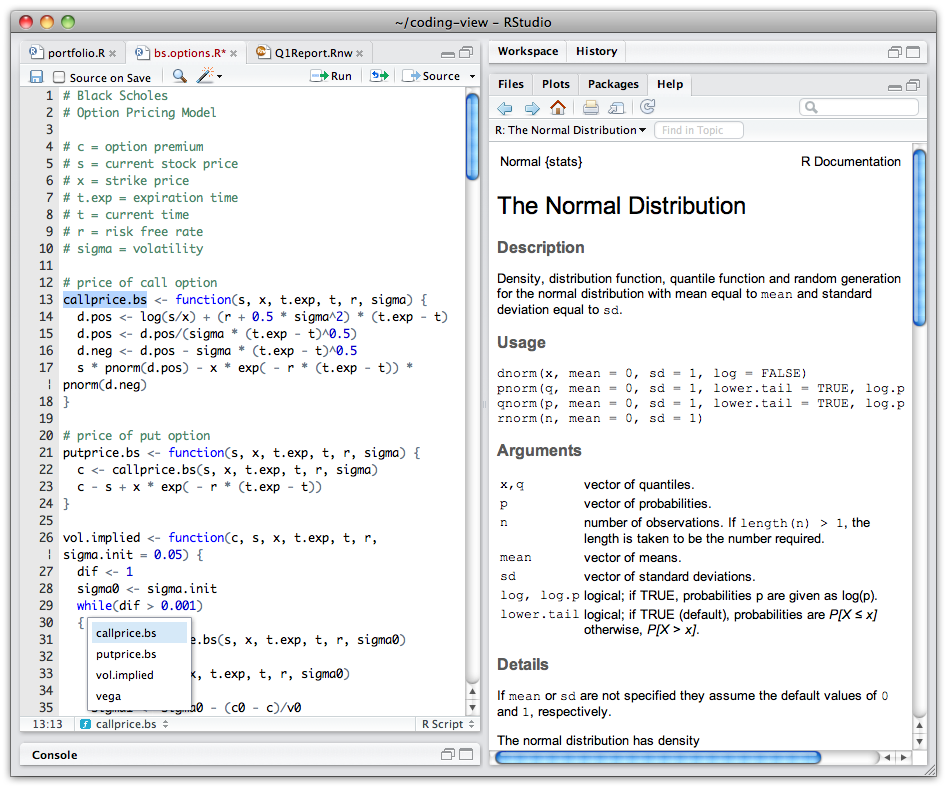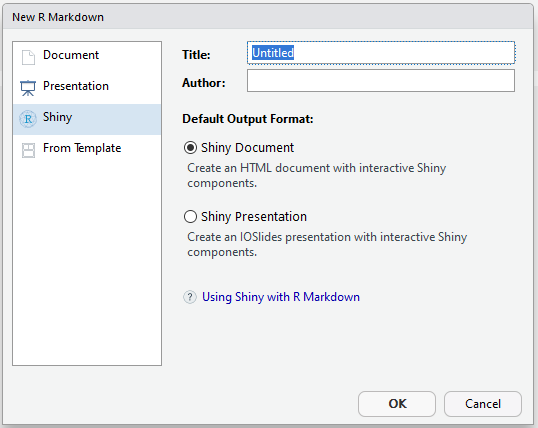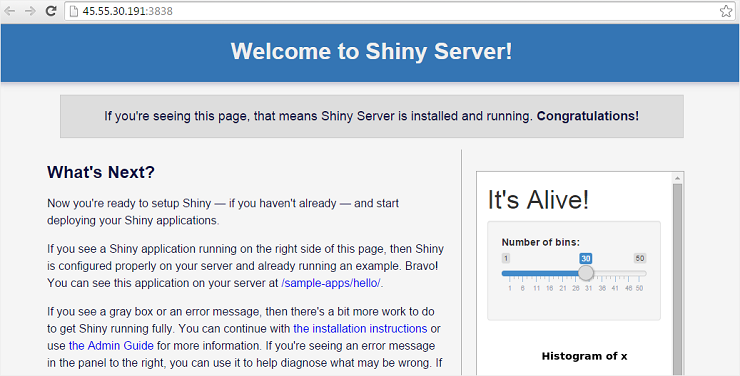We have briefly introduced Shiny documents in Section 2.8.2. Shiny is a very powerful framework for building web applications based on R. It is out of the scope of this book to make a comprehensive introduction to Shiny (which is too big a topic). We recommend that readers who are not familiar with Shiny learn more about it from the website https://shiny.rstudio.com before reading this chapter.

Unlike the more traditional workflow of creating static reports, you can create documents that allow your readers to change the parameters underlying your analysis and see the results immediately in Shiny R Markdown documents. In the example shown in Figure 2.8, the histogram will be automatically updated to reflect the number of bins selected by the reader.
R Markdown Package
And the integration between Shiny and R Markdown. To make the best use of your time during the presentation, I recommend you to take a look at the rmarkdown website in advance: Materials: blog post, R-script. About the speaker Yihui Xie. Yihui Xie is a software engineer at RStudio. In the next article in this series, we will cover building a calendar heat map in R Markdown, then combine it with a shinyApp to build on the shiny reactive elements we covered here. As mentioned above, a version of the report is available to view here, along with the script here. With R Markdown, you can easily create reproducible data analysis reports, presentations, dashboards, interactive applications, books, dissertations, websites, and journal articles, while enjoying the simplicity of Markdown and the great power of R and other languages.
R Shiny Markdown Pdf
A picture is worth a thousand words, and a Shiny document can potentially show you a thousand pictures as you interact with it. The readers are no longer tied to the fixed analysis and conclusions in the report. They may explore other possibilities by themselves, and possibly make new discoveries or draw different conclusions.




